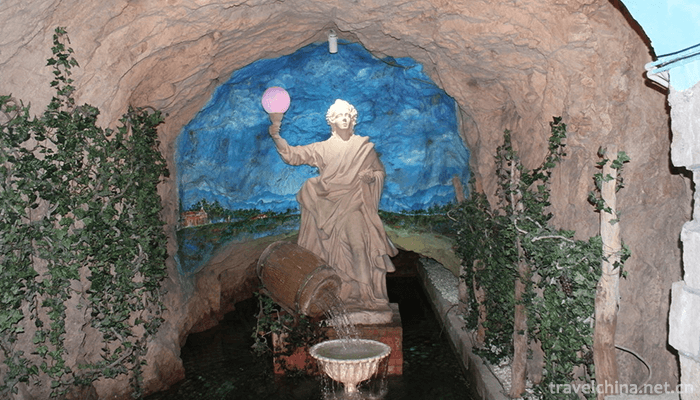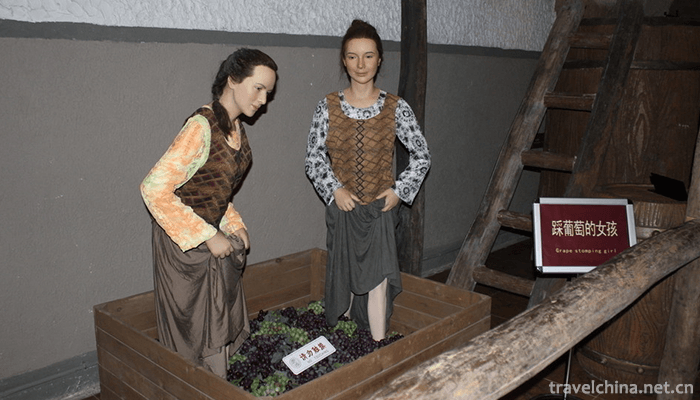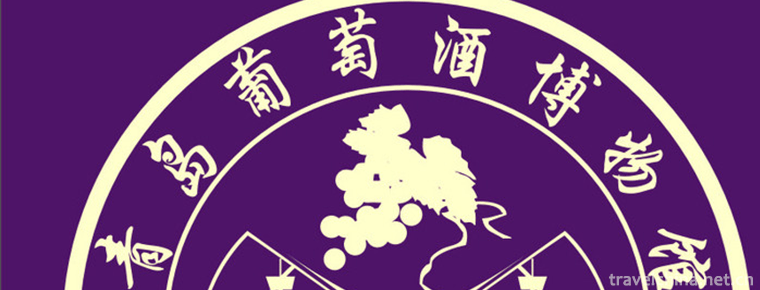Qingdao Wine Museum
Qingdao Wine Museum
Qingdao Wine Museum is located at No. 68 Yan'an Road, North District of Qingdao City. It is an underground museum with popular science education, collection and display, tourism and leisure, cultural exchange and other functions, which was invested by the government of North District of Qingdao in 2009. The Museum covers an area of 8000 square meters.
Development history
Qingdao Wine Museum is a special museum with the theme of wine history and culture exhibition, which was invested by the Municipal Northern District Committee and District Government in 2009. It integrates many functions such as popular science education, collection and exhibition, tourism and leisure, and cultural exchange. It is also the first underground museum with the theme of wine in China. The exterior landscape features European-style castle architecture, which will break the original facade and integrate the architectural styles of Britain, France, Italy, Spain, South Africa and other countries.
The Museum covers an area of 8000 square meters. The 192-meter-long main passageway in the cave is divided into five areas, which mainly describes the basic knowledge of wine grapes and wine, the development history of wine in the old and new world, and the cultural knowledge of wine. In the museum, wine culture and history are displayed in various ways, such as physical objects, pictures, images, sculptures, on-the-spot explanations, multimedia and so on, making it a popular science garden and creating a platform for improving people's understanding of wine.
architectural composition
Into the museum door, the first thing to be seen is a passage. The walls on both sides of the passage are covered with various kinds of propaganda windows. Under the illumination of wall lamp and pendant lamp, the museum staff installed a steel gauze net on the top of the passage for safety. The small details reflect the meticulousness and carefulness of the Museum staff. The theme of the museum is wine. It traces the origin and history of wine and shows the culture and quality of wine. Here, the real reproduction of grapes from planting to brewing the whole process and process of wine, through these exhibits, so that I do not know much about wine layman also began to have a preliminary understanding of wine.
The Wine Museum is divided into several exhibition areas. The statue of Dionysus, the God of wine, is vivid and the two dragons in the Spirit Spring Museum spit merrily. The wine warehouse is luxurious and elegant, the business hall is spacious and bright, the wine history hall is solemn and quiet, the China Wine Bank is simple and generous, and the East China Wine Exhibition Hall is antique. Walking into the Natural Grape Rainforest Hall is like walking into a fantastic manor. The grape vines stretch around the famous wineries in various grape producing areas. The grape Saint trees open wide "arms" connecting the grape vines around. Blurred lights create a dream-like feeling. The international view shows the wine products and regional culture with national flavor.
Having seen so many pavilions, if you want to taste wine from all over the world, World Bar is the best choice. There are specialist bartenders and grape wines from different countries. With soft music and pure wine, I believe you will like it.
Before visiting the Wine Museum, I didn't know about wine culture and had no habit of drinking, but after leaving the Wine Museum, my heart had been restless for a long time. I think of the time when caves were opened and civil air defense projects were built. The scenes of our predecessors smashing steel brazes and pushing carts are vivid. Although the achievements of our predecessors have not been used in warfare, it is also appropriate for later generations to make "reasonable use". But those hard scenes of smashing steel brazing, opening caves and stones can not be forgotten! The spirit of struggle of our predecessors, the development of our cause, so that our prospects are better!
Qingdao Wine Museum National AAAA Tourist Scenic Spot was unveiled on the morning of July 6, 2012. It has become a characteristic Museum integrating popular science education, collection and exhibition, tourism and leisure, cultural exchange and other functions.
Visiting information
Address: No. 68 Yan'an Road, Shibei District, Qingdao City
Tickets are 50 yuan.
Take bus No. 225, 25, 217, 370 and get off at No. 15 station.
15 downward, 219 downward, 302 downward, 306 downward, 368 downward under the zoo



-
1.Qin Lake National Wetland Park
Qinhu National Wetland Park is located between the central part of Jiangsu Province and the Yangtze and Huaihe River.
Time 2018-12-06 -
2.Peking Man Site at Zhoukoudian
Zhoukoudian Peking Man Site, located in Longgu Mountain, Fangshan District, Beijing, is an important Paleolithic site in China. Since 1927, three complete skulls and some remnants have been found in t
Time 2019-03-20 -
3.The Story of Barragan
Stories of witty figures of the Mongolian people in China. Long-term spread in Inner Mongolia, Xinjiang and other Mongolian areas. The protagonist Balagan Cang is the representative of the working peo
Time 2019-04-02 -
4.Ping Zhou He Zhou
Hezhou Pingxian was known as Pingdiao and Rhythm in ancient times, and it was also called Linxia Pingxian after 1949. Its main musical instrument is three strings.
Time 2019-05-03 -
5.Drum dance
Hani rhythm and drum dance is a kind of sacrificial dance of Hani people on the traditional festival "Onmatu". The dance is vigorous and bold, vigorous, simple and free, showing the same per
Time 2019-05-23 -
6.Miao Series Slope Cluster
Miao Series Slope Club refers to the festival activities of villages and villages in Rongshui County, Guangxi Zhuang Autonomous Region during the period from the third to seventeenth day of the first
Time 2019-06-05 -
7.Qiyang minor
Qiyang in the north of Yongzhou is a kind of traditional opera widely spread. After a long period of evolution and development, it has formed a traditional folk art form with strong local color,
Time 2019-06-10 -
8.Yangxin Tea Picking Opera
In May 2011, Gao'an City, Jiangxi Province, Linchuan District, Fuzhou City, Shaoguan City, Guangdong Province declared that tea-picking operas (Gao'an tea-picking opera, Fuzhou tea-picking opera, nort
Time 2019-07-10 -
9.Bone setting therapy of traditional Chinese medicine
Bone-setting, traditional Chinese medicine refers to the treatment of fracture, dislocation and other diseases by pushing, pulling, pressing and pressing. Orthopaedics, as a specialty name, is a speci
Time 2019-08-10 -
10.Anhui Agricultural University
Anhui Agriculture University is located in Hefei, capital of Anhui province. Center Urban area Key universities in Anhui By Ministry of agriculture and rural People's Republic of China State Forestry
Time 2019-10-10 -
11.Ecological environment of Luzhou
On July 5, 2019, the Ministry of ecology and environment of the people's Republic of China announced the special investigation of black and odorous water bodies in the first stage of overall planning and strengthening supervision in 2019. Luzhou was listed in the "list of cities whose
Time 2020-12-14 -
12.Deyang Deyang transportation
By the end of 2018, the total mileage of Deyang highway was 8345.2 km, including 7861.0 km of grade highway, accounting for 94.2% of total highway mileage; 655.8 km of high-grade highway and 205.5 km of expressway. The railway operating
Time 2020-12-14